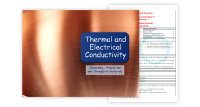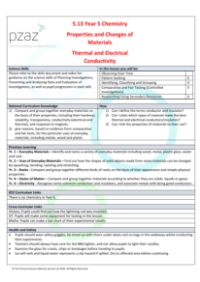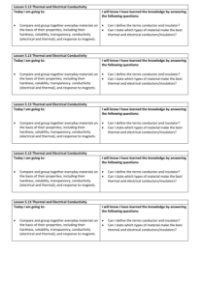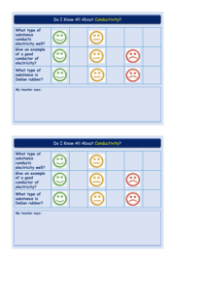Thermal and Electrical Conductivity - Results Tables
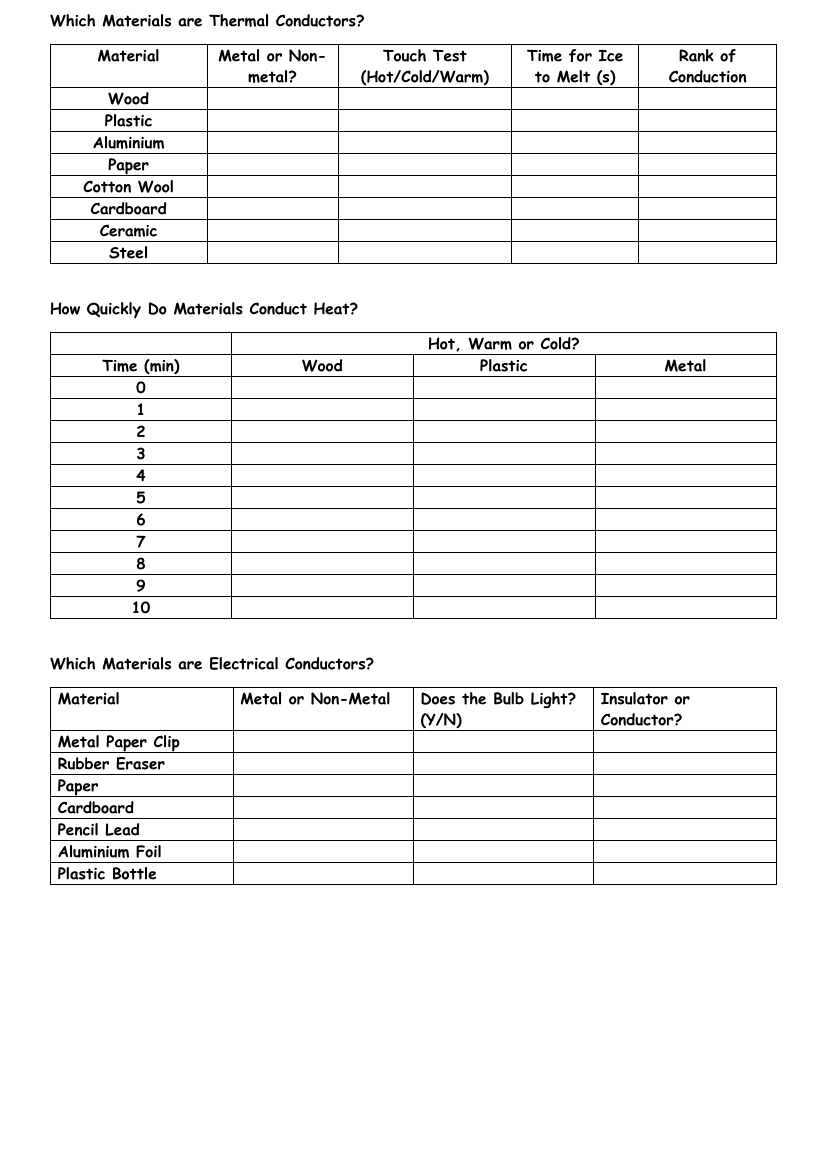
Science Resource Description
The provided text outlines a series of experiments and observations designed to test the thermal and electrical conductivity of various materials. In the thermal conductivity tests, materials such as wood, plastic, aluminium, paper, cotton wool, cardboard, ceramic, and steel are examined to determine their ability to transfer heat. This is assessed through a 'Touch Test' where the material's temperature is noted as hot, cold, or warm, and by measuring the time taken for ice to melt when in contact with each material. The results are then ranked to establish the relative conduction efficiency of each material. Additionally, a timed experiment is set up to monitor how quickly different materials, categorised as wood, plastic, and metal, can conduct heat over a period of ten minutes, with observations recorded at one-minute intervals.
Electrical conductivity is evaluated separately, with materials such as a metal paper clip, rubber eraser, paper, cardboard, pencil lead, aluminium foil, and a plastic bottle being tested for their ability to allow electrical current to pass through, indicated by whether a bulb lights up or not. The results determine whether each material can be classified as a conductor or an insulator. For both sets of experiments, the data is systematically recorded in results tables, providing a clear comparison of the properties of different materials and their potential uses based on their ability to conduct thermal and electrical energy.

